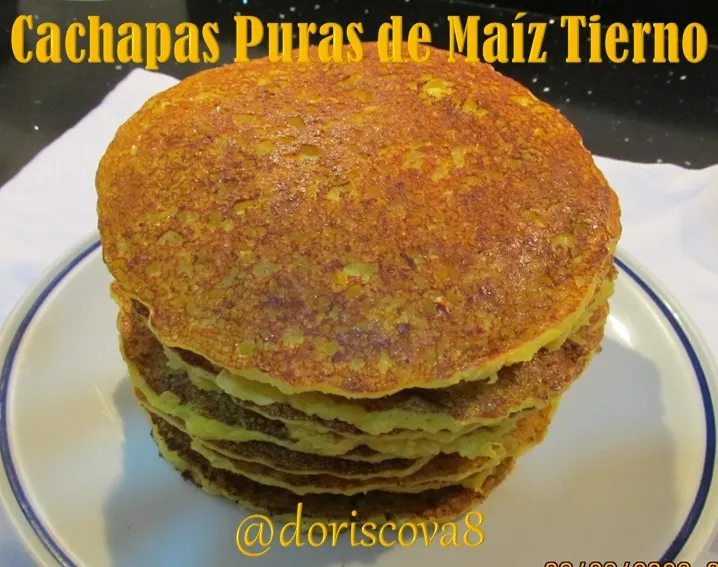
Saludos estimada comunidad de Hive Food, hoy les traigo para compartirles como realizo las cachapas puras de maíz tierno en casa, este acompañante es de una larga tradición de realizarlo, recuerdo que desde pequeña en casa de mis padres siempre lo realizábamos.
Además de lo exquisito que es comer estas cachapas como las llamamos en nuestro país, en otras regiones como en Colombia lo llaman arepas de maíz tierno, también porque las realizan con la masa más dura que como la realizamos nosotros en el país, estas cachapas son muy versátiles porque sirven para el desayuno acompañadas con un queso blando como el queso guayanés, o también con queso rallado, para un almuerzo acompañadas con carne asada como se come en el llano o como las expenden en algunos sitios tipo campestre.
O también acompañadas con un cerdo frito o también horneado o asado, y para cena las podemos acompañar con cualquiera de los antes mencionados y nos deja muy bien satisfechos, la verdad que comerse unas cachapas como se realizan en casa sin agregarle ningún tipo de harina para rendir la preparación, no es necesario porque uno en casa prepara las cosas como debe ser, con calidad.
Para la realización de estas cachapas, lo primero que hice fue irme a unos espacios donde sé que siempre están personas con camiones vendiendo las mazorcas o maíz tierno, en ese caso compre unas 30 mazorcas o lo que es lo mismo dos docenas y media, porque esa es la forma de venderlas, por docenas.

Llegamos a casa y empezamos a prepararlas, lo primero que realizamos fue pelarlos, es decir quitarles las hojas, este es un procedimiento que tarda bastante porque eran 30 mazorcas y eso se hace una a una y quitándoles la barba o pelusa que tienen las mazorcas, seguidamente se procedió a desgranarlos, que eso la verdad que es un trabajo bien tedioso, porque eso es uno por uno, hasta culminar con los 30, lleva su tiempo.

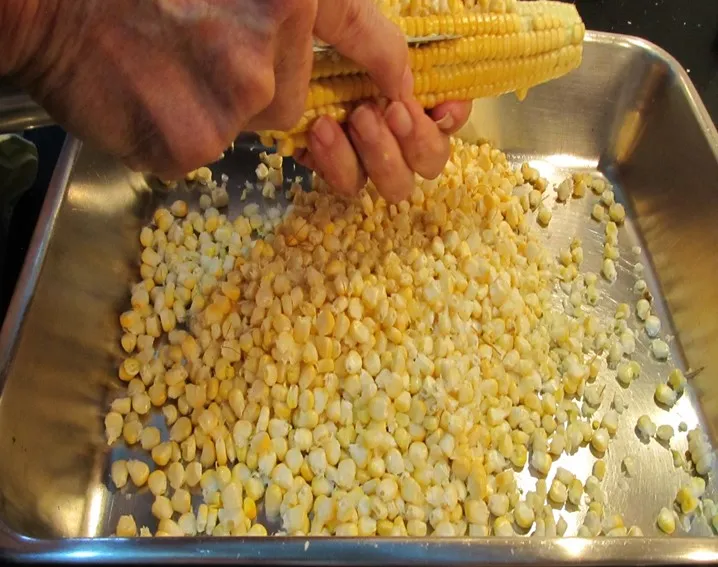
Luego del desgranado procedí a molerlo en un molino para granos, ese procedimiento es bastante rápido; luego a preparar la masa que debe ser espesa para poder realizar el tendido en la sartén, en la preparación de la masa le agregué un poquito de leche para que quedara mas suelta la masa, le adiciona un poquito de sal y azúcar al gusto.
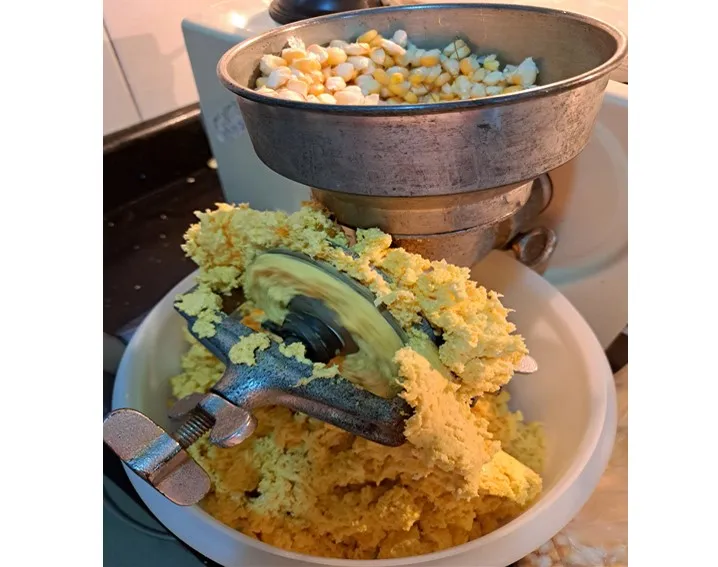
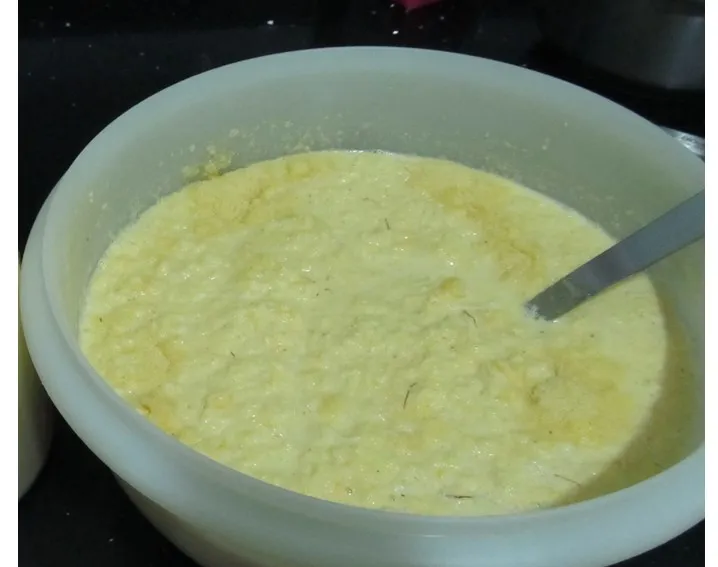
Una vez lista la masa, coloque en el fuego dos sartenes para aligerar la preparación, cuando el sartén este caliente se le agrega aceite con un atomizador o con una servilleta de tela, se espera que caliente y se añade la masa, no se puede adicionar la masa con el sartén frio porque se pega la masa, después de agregar la masa y cuando se vean que los bordes están cosidos se voltea con una espátula, esperamos que se cocine por ese otro lado y sacamos del sartén, y así sucesivamente hasta realizar toda la preparación.
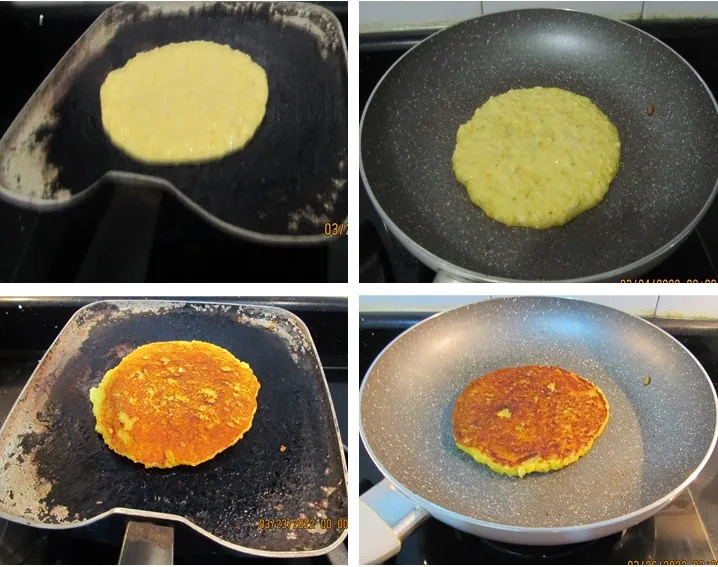
Debo agregar que me gusta hacer suficientes porque es una manera de tener algo listo para cualquier comida que deseemos, y fácil acompañarla con cualquiera de las proteínas que les mencione antes, y a disfrutar de una exquisita cachapa pura de maíz tierno, bien sanas y saludables como debemos comer en casa.
English
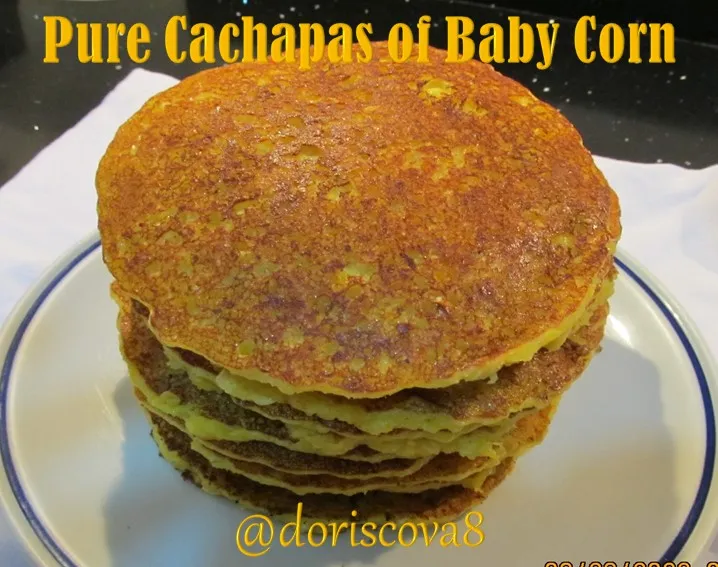
Greetings dear Hive Food community, today I bring you to share with you how I make the pure baby corn cachapas at home, this side dish is a long tradition to make it, I remember that since I was a little girl in my parents' house we always made it.
Besides how exquisite it is to eat these cachapas as we call them in our country, in other regions like in Colombia they call it arepas de maíz tierno, also because they are made with a harder dough than how we make it in the country, these cachapas are very versatile because they are served for breakfast accompanied with a soft cheese like guayanés cheese, or also with grated cheese, for lunch accompanied with grilled meat as they eat in the plains or as they sell them in some country type places.
Or also accompanied with a fried pork or also baked or roasted, and for dinner we can accompany them with any of the above mentioned and leaves us very well satisfied, the truth is that eating some cachapas as they are made at home without adding any flour to render the preparation, it is not necessary because one prepares things at home as it should be, with quality.
For the realization of these cachapas, the first thing I did was to go to some places where I know that there are always people with trucks selling the cobs or baby corn, in that case I bought about 30 cobs or what is the same two and a half dozen, because that's the way to sell them, by the dozen.

We arrived home and began to prepare them, the first thing we did was to peel them, that is to remove the leaves, this is a procedure that takes quite a long time because there were 30 cobs and that is done one by one and removing the beard or fluff that have the cobs, then we proceeded to shelling them, which is really a very tedious job, because that is one by one, until culminating with the 30, it takes time.


After the shelling I proceeded to grind it in a grain mill, this procedure is quite fast; then to prepare the dough that should be thick to be able to make the laying in the pan, in the preparation of the dough I added a little milk to make the dough looser, I added a little salt and sugar to taste.


Once the dough is ready, place two frying pans on the fire to lighten the preparation, when the pan is hot add oil with a spray bottle or a cloth napkin, wait until it is hot and add the dough, you can not add the dough when the pan is cold because the dough sticks, after adding the dough and when you see that the edges are sewn, turn it over with a spatula, wait for it to cook on the other side and take it out of the pan, and so on until the whole preparation is done.

I must add that I like to make enough because it is a way to have something ready for any meal we want, and easy to accompany it with any of the proteins I mentioned before, and enjoy an exquisite pure cachapa of tender corn, healthy and wholesome as we should eat at home.
Translated with www.DeepL.com/Translator (free version)
Fuente de imágenes: Archivo Personal.




MIS REDES SOCIALES




